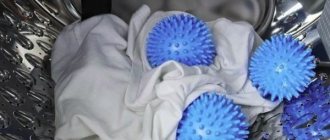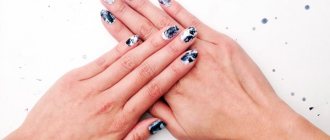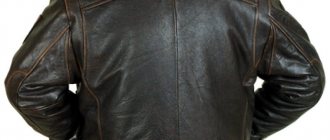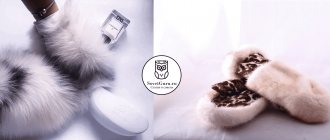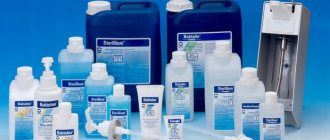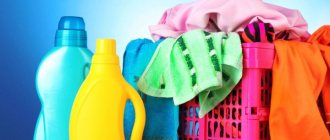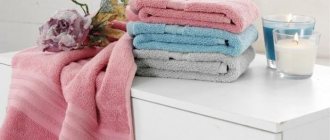Gel, or liquid washing powder, is a homogeneous mass based on surfactants (surfactants), chemical bleaches, enzymes, and alkali. You can make laundry gel with your own hands from available products - baking soda, citric acid, green tea, laundry soap, essential oils, etc. Homemade detergents are as effective as store-bought powders. They are easily washed out of fabrics and remove stubborn stains. If necessary, additives that cause allergies can be excluded from the gel.
Advantages of liquid
Personally made laundry detergents have many advantages over store-bought ones and have a number of advantages.
No surfactants included
Industrially produced gels contain surfactants. These components are some of the main ingredients. At their core, these are aggressive synthetic substances that have a negative effect on the skin and accelerate tissue wear.
In prepared products, most of which are made from soap, there is no such component at all.
No phosphates
Many washing powders and gels that are bought in stores contain phosphates or their derivatives. These components are designed to remove stubborn dirt and stains.
At the same time, they have a negative effect on the human body:
- reduce immunity;
- depress the nervous system;
- have a bad effect on the skin.
Phosphates can get into a homemade gel only if they are added there specifically.
Designed for any temperature
Most purchased products are designed for processing in warm and hot water . This requirement is due to the peculiarities of the composition of the drug, the active components of which begin to work only when heated.
Homemade detergents, unlike store-bought ones, show their effectiveness even in non-hot water.
Price
Homemade washing gels are much cheaper than store-bought ones. To store them, containers from products that have already run out can be used.
The composition of the home remedy is understandable and clear from the very beginning , since during its production all stages of creation and the quality of the ingredients introduced are personally controlled.
Hypoallergenic
Gels that are prepared at home contain few components. At the same time, it is possible to control all the ingredients that are added to the detergent. And avoid those to which you are allergic.
Whitening gel paste
There is no need to resort to drastic measures to whiten bedding, clothing or underwear. A homemade whitening paste will remove any stains and make your clothes snow-white.
What you need for cooking:
- purified water – 1.5 liters;
- laundry soap with whitening effect – 1 bar;
- baking soda – 250 g;
- sodium carbonate – 220 g;
- aroma oil – 6-7 drops (optional).
How to prepare whitening gel paste:
- The soap should be crushed on a fine grater and filled with water.
- Place over medium heat and stir constantly. Boil the soap solution until a homogeneous thick mass is formed.
- Add the remaining ingredients and mix well again.
The pasta is ready! It is considered universal, so things can be washed not only by hand, but also in an automatic washing machine.
Recommendation! Essential oils can only be used if you are not allergic to them. For washing children's clothing, it is better to remove this component from the composition.
Flaws
Making the gel on your own requires time spent on its preparation, the availability of convenient containers for packaging and strict adherence to production technology. This product also has other disadvantages.
Almost all products contain soap . This component does not dissolve well during the washing process and foams slightly, especially in cold water.
Despite the fact that the homemade gel can be used in cold water, it shows the best results at a water temperature of +40ºС.
Soda ash or baking soda
The gel may contain soda ash as one of the components. This component has a significant disadvantage - washing out bright colors, which leads to dulling of clothes, especially with repeated washing.
Baking soda is an alternative option . But this component also has a drawback: when replacing soda ash with baking soda, the washing effect becomes lower.
What can't a homemade laundry detergent handle?
Not even a rich homemade gel can cope with all types of contaminants. These stubborn stains include:
- coffee;
- chocolate;
- juices;
- fruits;
- tea;
- grass, etc.
To remove stubborn stains, you can use a commercial stain remover.
How to make washing gel with your own hands
If, after loading things into the drum, you remember that you didn’t buy washing powder, don’t be upset. Recipes for homemade gels will come to the rescue, eliminating extraneous odors and dirt, making fabrics softer and colors more saturated. In order for household chemicals to cope with the tasks assigned to them, they must contain surfactants, alkalis or acids. The following will work as basic ingredients:
- table vinegar;
- lemon acid;
- sodium bicarbonate (soda);
- laundry soap;
- dishwashing detergent, etc.
Things will smell nice if you add essential oils, lemon juice or synthetic fragrances to the product.
To ensure that the gel retains its properties longer, store it in a container with an airtight lid in the refrigerator door.
From laundry soap
Laundry soap contains fatty acids and alkalis, which can easily remove old stains. The gel based on it is suitable for caring for clothes, washing floors, and dishes.
The dosage of the gel depends on the hardness of the water and the amount of laundry. To wash 4 kg of clothes you will need from 200 to 350 ml.
Ingredients:
- 3 ml essential oil;
- 100 g soap;
- 4 liters of water;
- 3 tbsp. l. soda ash.
Preparation:
- a piece of soap is crushed with a knife or on a grater;
- pour into a saucepan with 1 liter of water;
- heat until the chips are completely dissolved;
- pour 3 liters of water into another pan;
- add sodium bicarbonate;
- boil for 1-2 minutes;
- solutions from two pans are mixed;
- drop essential oil.
To prevent scale formation on the heating element and the drum of the machine, citric acid is additionally used. 15 g of powder is poured into the conditioner tray.
From baby soap
To wash underwear, it is recommended to use hypoallergenic soap with a minimum content of synthetic components. To prepare the gel you will need:
- 150 g soap shavings;
- 5 liters of water;
- 150 g of soda (preferably soda ash).
Preparation:
- Bring 3 liters of water to a boil;
- dissolve soda in it;
- Soap shavings are poured into the second pan;
- pour 1.5 liters of water;
- the homogeneous mass is poured into a container with a soda solution.
Even if the recipe is changed, you need to add the same amount of soda and soap shavings. Otherwise, the product will not have the desired properties. To make things smell nice, essential oils of lavender, bergamot, lemon or sandalwood are dripped into the cooled mass.
When working with soda ash, you should use rubber gloves. Failure to follow the recommendations is dangerous due to skin irritation and rashes.
With sodium tetraborate
Borax, or sodium tetraborate, is an inorganic powder with disinfectant properties that increases the viscosity of liquids. It is absolutely safe, therefore it is used in the production of detergents and cosmetics. To make liquid powder you will need:
- 200 g soap shavings;
- 5 liters of water;
- 150 g sodium bicarbonate;
- 150 g sodium tetraborate.
How to make laundry gel with borax:
- in an enamel container, bring water to a boil;
- dissolve the crushed soap;
- baking soda is poured into the thickened mass;
- add borax;
- mix thoroughly and cool.
If the gel is thick, add 150-200 ml of water to it.
So that it has deodorizing properties, pour in 3 ml of essential oil. For 1 wash use no more than 300 ml.
With citric acid (vinegar) and salt
Products containing salt and citric acid are suitable for washing colored items. These components not only remove dirt, but also make colors more saturated. The gel contains:
- 3 tbsp. l. citric acid;
- 250 g salt;
- 300 g crushed soap;
- 3 liters of water.
Preparing liquid laundry detergent:
- water is heated to 50-60°C;
- dissolve soap in it;
- add salt and citric acid;
- drop up to 2 ml of lemon or bergamot oil.
To be sure to get rid of foreign odors, use 50 ml of table vinegar instead of citric acid. No more than 250 ml of gel is enough for washing.
For old stains on clothes, pre-soaking is recommended. A solution is prepared from soap, citric acid and warm water. Things are lowered into it for 15-20 minutes.
With green tea for white clothes
Tea eliminates unpleasant odors and softens fabrics, so it acts as a conditioner. To prepare the gel you will need:
- 250 g soap;
- 3 tbsp. l. loose leaf tea;
- 4 liters of water;
- 150 g soda.
Preparation of conditioner gel:
- boil the tea in 1 liter of water for 2 minutes;
- the cooled broth is filtered;
- heat 3 liters of water in a saucepan;
- dissolve the crushed soap;
- add sodium bicarbonate and tea;
- pour into a glass jar or bottle.
To soften fabrics, it is recommended to use loose leaf tea without fillers or flavors. To prevent the fabric from changing its shade, the gel is not used for washing white items.
Delicate conditioner with white vinegar
Laundry detergents do not have softening properties, so over time, items made from pile fabrics become hard and unpleasant to the touch. To deal with the problem, use a gel conditioner with white vinegar.
Ingredients:
- 200 ml white vinegar;
- 5-6 drops of lemon oil;
- 150 g sodium bicarbonate;
- 200 ml water.
Preparing the conditioner:
- water is heated to 50-60°C;
- add sodium bicarbonate;
- add vinegar and stir;
- drop essential oil.
The cooled gel-like mass is poured into a container, which is hermetically sealed with a lid. When washing, add no more than 50 ml of gel to the conditioner compartment.
When extinguishing soda, you need to be careful. If the product gets into your eyes when foaming, rinse the mucous membranes with running water.
Features of application
Homemade gel differs from store-bought gel. Features of use include the following:
It is better to pour the gel directly into the drum, and not into the container intended for washing powder on the body of the machine. This will prevent some of the product from smearing on the walls of the tray.- For greater effect from the washing process, it is advisable to pre-soak.
- Calculation of the norm of homemade washing gel: for 4 kg of laundry - at least ½ cup of detergent and no more than 1 cup. For difficult to remove stains on clothing, the dosage can be increased (+150 ml) per load.
- The gel can be used for both hand and machine washing of items. And also for cleaning.
Base and ingredients for natural shower gel
Any cleanser requires a foaming detergent component:
- Soap nuts are a natural ingredient for lovers of organic cosmetics. Expensive and difficult to get.
- Baby soap - sold anywhere and for a small amount. If you purchase unscented, you can use essential oils to create a scent for yourself. You can use baby shampoo.
- Separately sold surfactants: lauryl glucoside, cocamidopropyl betaine, sodium cocoyl sulfosuccinate. They are safe and can be purchased at soap making stores.
- Ready concentrated base. It is not diluted, but heated and mixed with the rest of the ingredients. According to reviews, Organic Liguid Castile Soap Base is considered a good base.
Other components of the base:
- glycerin to soften the skin;
- medicinal herbs or dried flowers - mint, linden, St. John's wort, string, nettle, chamomile, lemon balm.
Additional Ingredients:
- Salt adds viscosity. Sea salt cares for the skin, exfoliates it, and saturates it with useful minerals.
- Vitamins in liquid form (A and E) for additional care.
- Essential oils will add a pleasant aroma. Ginger, nutmeg or cinnamon oils have a warming effect. Eucalyptus, mint, or pine oil will create a tonic effect. Citrus esters have an anti-cellulite effect.
- Basic oils for skin care. For dry skin, avocado and wheat germ oil are suitable, for oily skin - grape seed and apricot oil, for normal skin - peach and almond oil.
- Cosmetic clay deeply cleanses and fills the skin with minerals.
- Honey will soften the skin and relieve irritation.
We advise you to read: Honey wrap for weight loss
To add shades, you can add food coloring to natural shower gel.
Reviews
A large number of recipes allows each housewife to choose the best option for preparing homemade washing gel. Many people complain that self-prepared gels are less effective than store-bought ones; laundry washes worse and loses color.
But for allergy sufferers and those who want to be sure that the detergent will not harm the health of their household, preparing such detergent preparations is a way out.
Reviews can be found here and here, here and here.
Available means
Most people prefer to clean their washing machine using folk remedies. Here are a few of the most effective ones.
Hydrogen peroxide
Hydrogen peroxide is a universal drug that has a slight whitening effect. Unlike chlorine, peroxide is absolutely safe for humans and animals, it does not emit toxic compounds, does not leave sediment, and is completely soluble in water. However, it also has a serious drawback - low efficiency. It usually takes a minimum of 3 hours to remove peroxide contaminants.
Peroxide cleaning:
- Pour the drug into the spray bottle (do not dilute with water!).
- Spray the product on all internal surfaces of the drum, as well as on the cuff.
- Close the drum door and leave it for 10 minutes.
- Clean especially difficult stains with soda.
- Turn on the machine for a long wash at 90 degrees.
- After finishing washing, turn on the second rinse.
Lemon acid
To clean the internal elements of the machine, you should pour acid into the powder tray and turn on the device for washing at high temperature (calculate the amount of powder based on the following formula: for each kilogram of drum volume there should be 25-30 g of product).
Soda
Baking soda helps get rid of traces of mold, mildew, limescale, and stench:
- With soda you can clean all the filters of the machine, its drum, powder container, cuff or the entire body.
- You can pour a small amount of soda powder into the filter of the machine, and then use a soft cloth to remove all contaminants. Finally, be sure to rinse the filter with clean water.
- To fully clean the internal elements of the machine, you will need a whole pack of soda. Pour it into the powder container, and pour the rest directly into the drum. Turn on the device, select the short wash mode at high temperature.
Vinegar
Loading …
Acetic acid helps fight fungus and mold:
- Pour 2 cups of 9% vinegar into the liquid detergent compartment.
- Turn on the device, selecting the high temperature wash cycle. Leave the unit running for 10-15 minutes.
- Then pause the machine and leave it to stand for several hours. Then resume washing.
- At the end you need to turn on an additional rinse.
White
Whiteness effectively fights pathogenic microflora and soap sediment:
- You need to pour a liter of detergent into the drum and run a long wash at high temperature.
- Then, before starting rinsing, pause the unit (for about 1 hour), and then turn on the wash again.
- As soon as the cycle is completed, turn on the “Fast” mode on the device at 30 degrees.
Copper sulfate
Copper sulfate helps to cope with fungus and mold that appears on the sealing gum. Simply wipe the cuff with the preparation around the entire circumference and leave for 2-3 hours. After that, the elastic band is wiped with a clean sponge, and the machine starts in long-term washing mode.
Precautionary measures
The available products are quite effective in combating dirt in the washing machine; some of them require careful handling:
- Do not use abrasive or overly aggressive compounds to clean filters, heating elements or the surface of the drum. The abrasive may leave scratches on the surface, which will lead to damage to the device in the future.
- Wipe the drum and sealing collar thoroughly with a dry towel after washing to avoid mold.
Recommendations on the topic
When preparing washing gel, it is recommended to use the following tips:
- The required dose of gel per wash should be increased if the clothes are very dirty or the tap water is very hard.
- Pre-soaking laundry makes washing easier.
The gels do not contain foaming agents, but this does not reduce the quality of washing.- It is recommended to wash colored items at a water temperature of +40ºС.
- Old stains should be soaked first.
- When increasing the dosage of the gel, it is necessary to use the additional rinse function.
- Vinegar dissipates very quickly. Still at the stage of drying things.
- Gels do not pose a threat to the insides of the washing machine.
- The gel should be stored at room temperature, as the composition can thicken greatly in the cold.
- Even before you start preparing the gel, you should take care of preparing the container into which the detergent will be poured.
You will find a lot of useful and important information about washing gels in this section.
Terms of use
There should be no problems with hand washing; the technology has already been described earlier. The linen is soaked in a basin of warm water, add 1 tbsp. l. homemade gel, whip up the foam and leave the clothes for half an hour. Particularly dirty places (for example, shirt collar, sleeves, stains on children's things) should be rubbed with laundry soap gel. After which you need to thoroughly rinse the items with clean water and wring out. The product must be stored in a jar with the lid closed, otherwise it will thicken quickly.
For a washing machine, you can add laundry detergent from laundry soap to a compartment specially designed for this (if it involves the use of gel-like substances) or pour it directly into the drum. 2-3 tbsp is enough. l. products, it is undesirable to use any more, since the foam will be difficult to remove.
